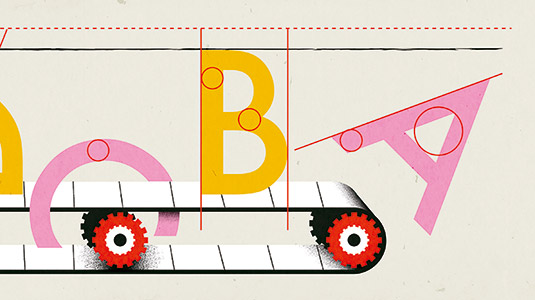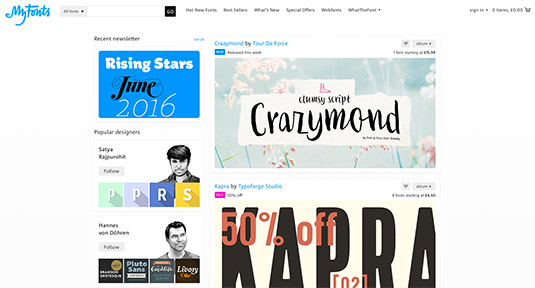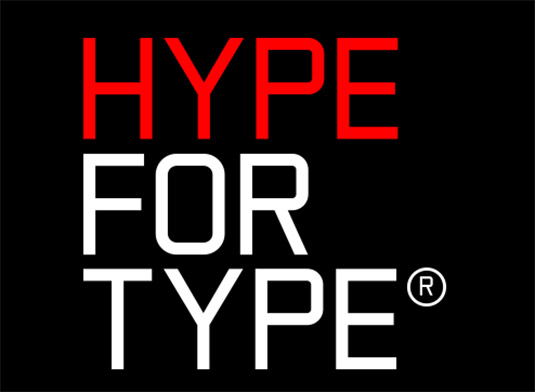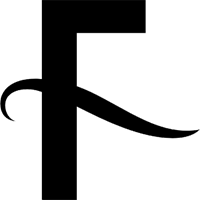 Get your fonts out there with this expert advice
Get your fonts out there with this expert advice
You've created your own typeface. Now what? Whether you harbor a secret desire to see designers and creative directors around the world using your fonts, or simply put some recent downtime to good use, if you've decided to make your own font and want to generate money from it, then now the real challenge begins: getting people to pay. So, what are your options?
Three broad strategies lie open to you. You can approach a font retailer such as YouWorkForThem accepts OpenType fonts
The first task is to find the right foundry. Check out the kind of fonts the firm you're interested in sells to see if they match your style. Read the documentation on its website to get a feel for the level of assistance it offers. Find out where its fonts are usually sold, how they're marketed, what percentages are paid, and how long its contract periods are.
Smaller foundries often prefer working with people they know, but most of the larger ones are open to unsolicited proposals, as long as you comply with their submission guidelines.
For example, YouWorkForThem asks you to email an OpenType version of your font or PDF specimen under 10MB in size. You should then allow 5-10 business days for it to be reviewed and tested.
What happens next varies from foundry to foundry, and on a case-by-case basis. "If I think a design has a place with us we get moving right away and ask [the creator] to complete the standard agreement documents," says Michael Paul Young, creative director of YouWorkForThem.
"Once they return those, we get them an account set up in our designer admin system. From there, we offer a full feature area in which they can upload new products and modify any profile/ licensing details they need. Once we get the product submission (slideshow images, fonts, and so on), our team reviews it all to make sure things look good, and typically new product uploads are online within 12-24 hours."
Technical quality
 MyFonts have a high quality threshold
MyFonts have a high quality threshold
Many retailers also accept submissions from individual designers, although you'll be expected to display a high level of technical quality and consistency. Unlike font foundries, they will expect a typeface to be market-ready already.
That doesn't seem to stop people submitting sub-par work, though. "Many designers seems convinced that making a font is a piece of cake," complains Jan Middendorp, a Dutch designer working for MyFonts as an independent consultant and editor.
"A large part of the fonts we receive are of terrible quality – really amateurish. Some people seem too lazy to double-check the characters they've designed, or digitised from their handwriting. Many younger designers don't seem to realize that designing type is a question of utter patience and precision. We cannot coach these people."
Atlanta-based type designer Stefán Kjartansson's advice is: "Do the math. Those infinite kerning combinations have kept me up many nights. Make sure you think of each character as a part of a larger family; to be perfectly balanced, no one can stand out."
Still, don't get too paranoid. "Technical mistakes are made by all, even the pros, and bad kerning, open points and so on can easily be corrected," says Michael Paul Young, who believes that originality is more critical than absolute technical perfection. "There's endless room for exploration, and some of our biggest successes have come from designers doing something different."
Rewrite the rulebook
 Hype For Type appreciate experimental designs
Hype For Type appreciate experimental designs
Alex Haigh, founder and creative director of HypeForType, takes a similar line. "Typefaces such as [Alex Trochut's] Neo Deco are incredibly unique," he says. "It would be really refreshing to see artists and designers take a more experimental route. We've got thousands of sans-serif fonts, so why not create something no one has ever seen before?"
Of course, your typeface also has to fill a need. "If you feel you're always looking for type that doesn't quite meet what you had in mind, or envision changing details in letterforms you come across, that could be your cue," says Justin Graefer, co-founder of Canadian type foundry BLKBK.
"Be observant of what's available in the market and fill voids: styles that don't exist," he adds. "[Or] add your own flair to styles that are already available. First and foremost, originality is key. Do it with passion, soul, and integrity."
Finally, think about whether you yourself would buy the font you are designing, and how you would market it. "As a graphic designer, I always design type with the thought: 'Would I use it in a project myself?'," says Rick Banks, director of Face37, whose font F37 Bella is one of HypeForType's best sellers.
"This is an area where I think graphic designers have an edge over the traditional type designers," he adds. "We can PR a typeface better – whether that's through a beautiful printed specimen, enticing carousels or a bespoke website."
This article was originally published in Computer Arts magazine issue 250. Buy it here.










